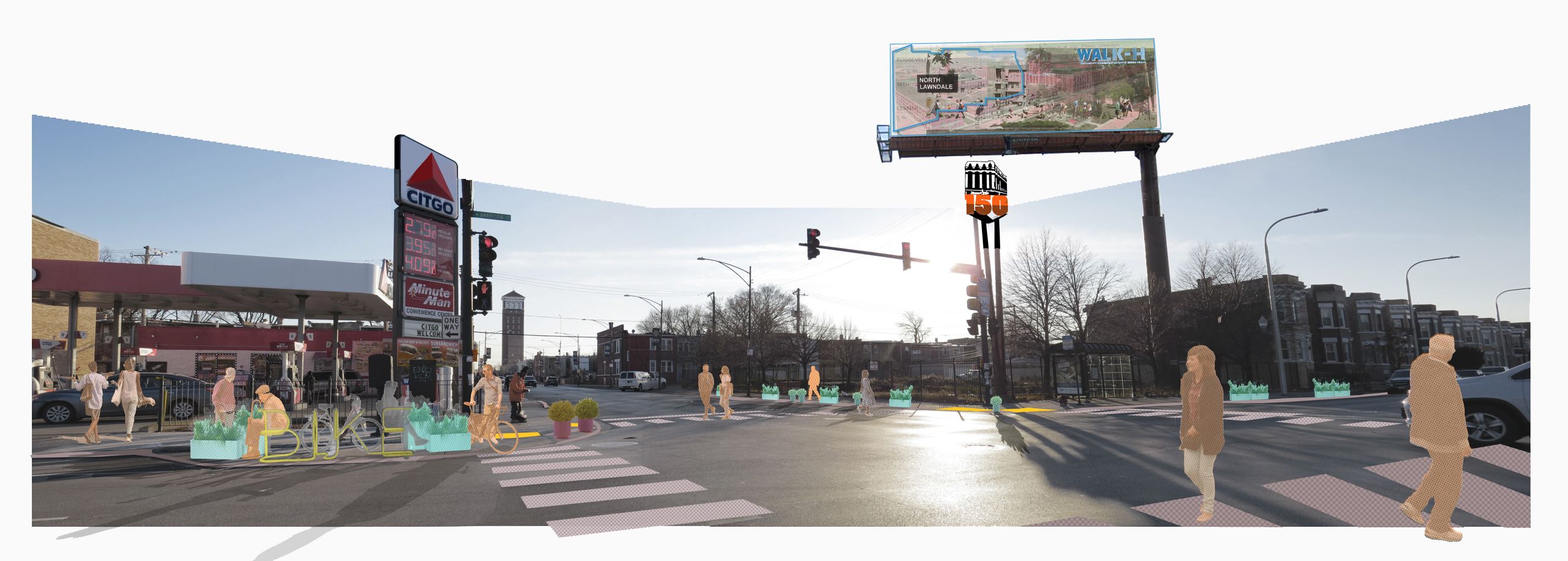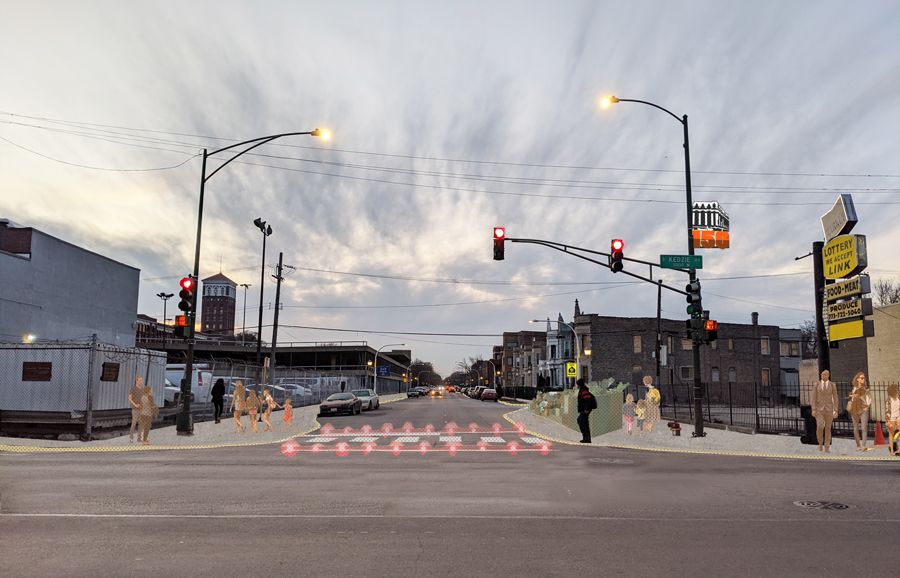Making a More Walkable North Lawndale

by Bree Witt
What does repairing crumbled sidewalks have to do with making a city more equitable?
That’s a question being explored in a project led by the North Lawndale Community Coordinating Council and the School of the Art Institute of Chicago (SAIC). As urban planners know through statistics, and neighborhood residents understand through experience, the walkability of an area is a critical component of its economic health. Studies have shown that walkable cities result in better transit access, more jobs, and a more sustainable environment. Put simply: you can’t have walkability without good infrastructure, and you can’t have economic growth without walkability.
The project, Walk-H, aims to identify the barriers to walking in North Lawndale, a historic West Side neighborhood that can count civil rights leader Martin Luther King Jr., musician Benny Goodman, and former Israeli Prime Minister Golda Meir as former residents. SAIC has been partnering with North Lawndale residents and artists since 2015 as part of its work at Homan Square.
Walk-H began as a research course in the summer of 2019. SAIC Professor Odile Compagnon led a class of North Lawndale high school students and SAIC alums in assessing the obstacles to walking in the half-mile radius around the Kedzie-Homan Blue Line “L” station—the gateway to the neighborhood. The report they produced with the North Lawndale Community Coordinating Council found many limitations impacting walkability: crumbled sidewalks, unpainted crosswalks, poor lighting, and an overall lack of visual identity and curb appeal. The inaugural class’s work with the council put the wheels in motion for Assistant Professor, Adj. Eric Hotchkiss’s students, who have continued the work of finding ways to make the area more walkable over this past year.
Hotchkiss models a curiosity, generosity, and respectful engagement for both his students and the North Lawndale community members they’re working with, and he underscored the importance of working directly with neighborhood residents to find a solution.

A 3D rendering of streetscape improvements from the Walk-H walkability assessment report.
A 3D rendering of streetscape improvements from the Walk-H walkability assessment report.
“To facilitate connectivity and understanding among the community,” Hotchkiss explained, “everyone has to be at the table to figure out what this design interaction that we may be creating will be.”
His class is working alongside the community to bring all voices together and determine how art and design can help. As a result, the class is now collaborating with the North Lawndale Community Coordinating Council and North Lawndale residents on a public art project that aims to brighten the area surrounding the station and serve as a true reflection of the community. Workshops are being held throughout the spring to gain feedback from the community.
“The workshops give us a better idea of what could be a possibility for improving walkability,” said Rochelle Jackson, chair of the transportation/infrastructure committee of the North Lawndale Community Coordinating Council. Jackson, who has worked for many years to help beautify the neighborhood, called the ideas an “eye opener” for what could be done.
Additionally, Hotchkiss’s students are working with a youth class led by Carrie Wright (MDes 2019) to determine the look and feel of the work. Wright’s class, made up of eight North Lawndale teens, collected oral histories and prepared mood boards to help identify the themes, colors, and stories that can inform the artwork.
“Art brings people together. It starts a conversation, and it creates friendships: just by talking to a stranger that you meet on the street about art [in the community], you find that you have more in common than you think you do. Now all of a sudden, you have something to talk about.”
Jackson and the North Lawndale community continue to work with the city and other organizations to address transportation and infrastructure issues and boost economic development. This work has been in progress for some time, and Jackson is excited to see the outcomes of this work come to fruition.
“Art brings people together,” said Jackson. “It starts a conversation, and it creates friendships: just by talking to a stranger that you meet on the street about art [in the community], you find that you have more in common than you think you do. Now all of a sudden, you have something to talk about.” ■

